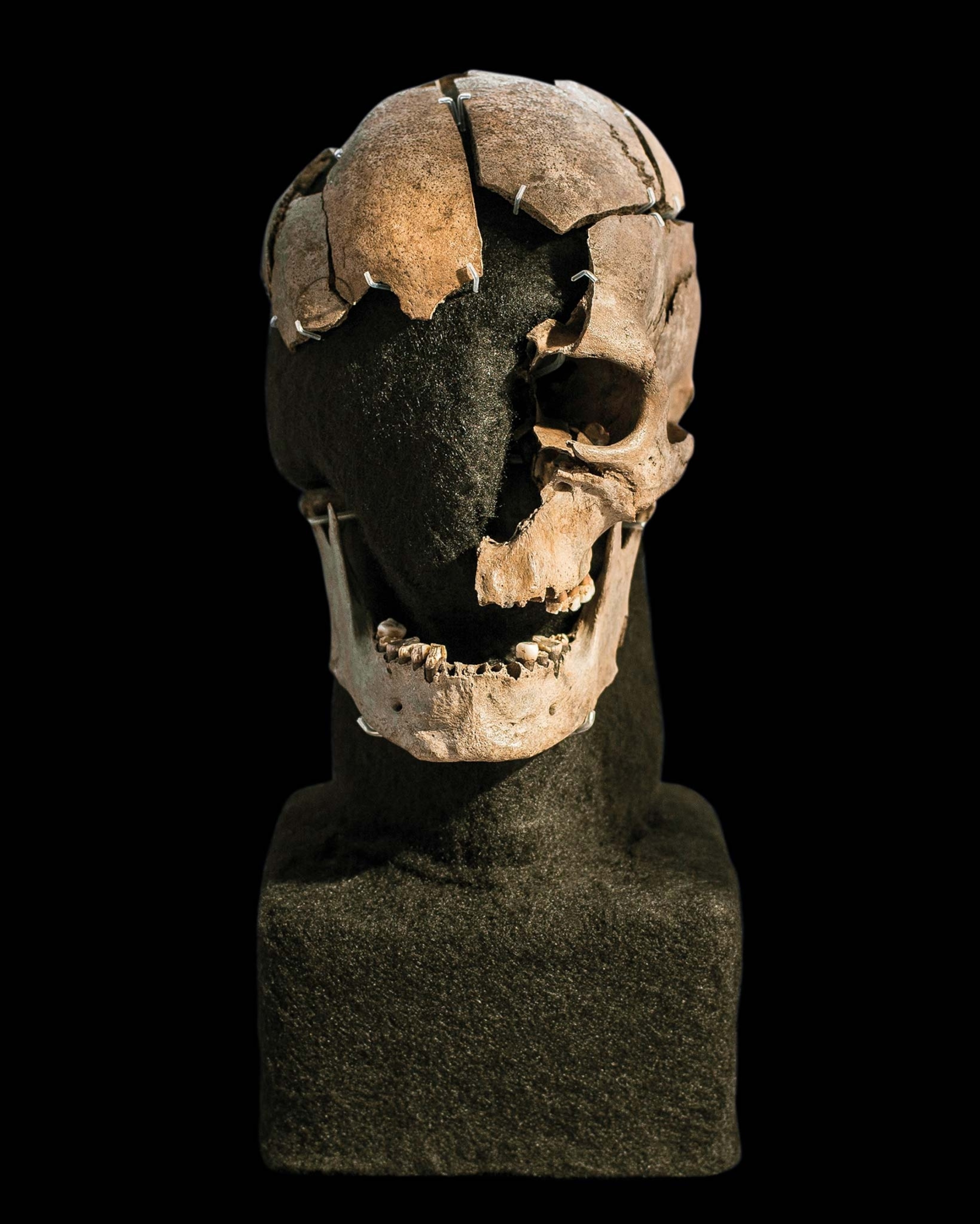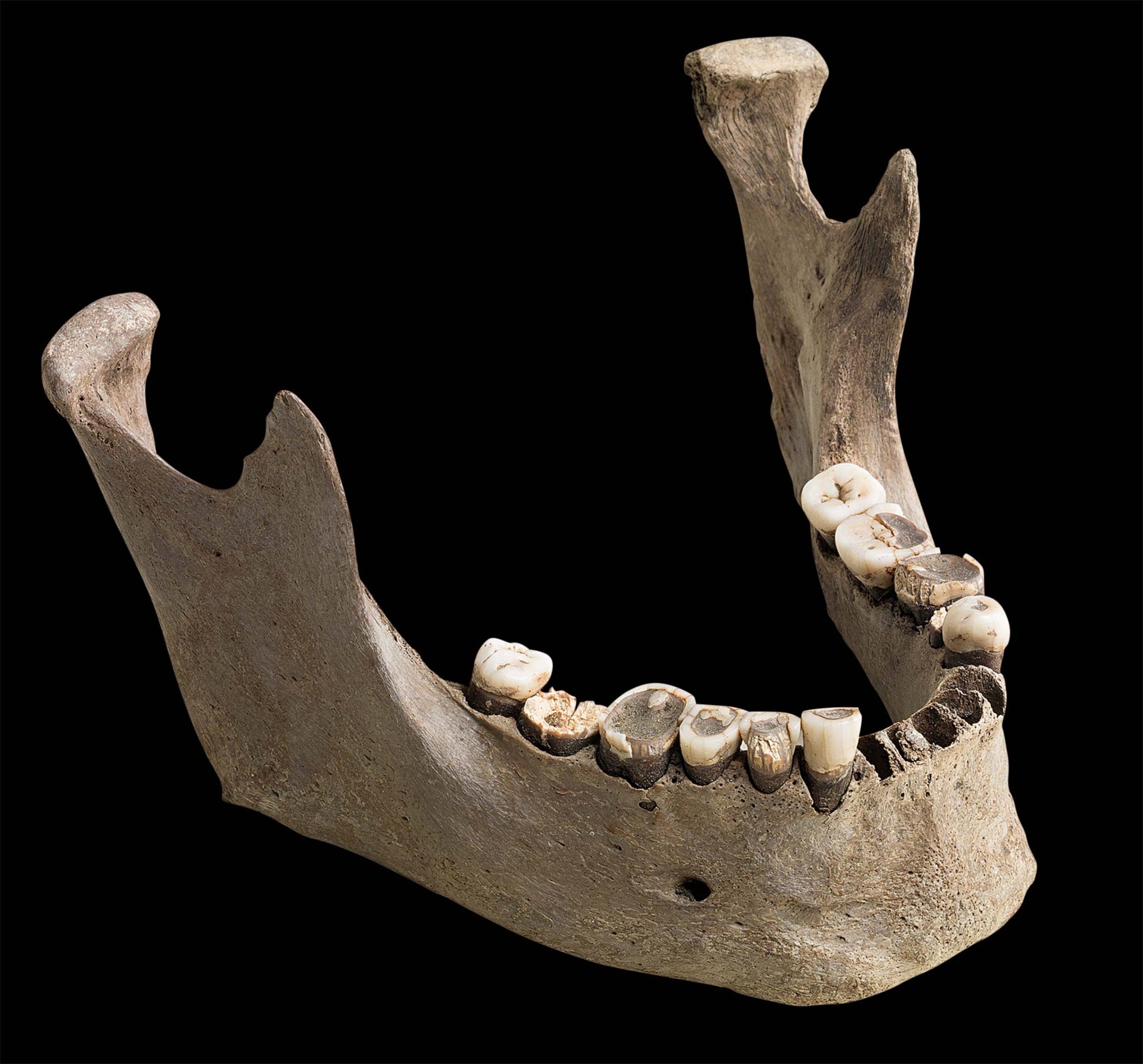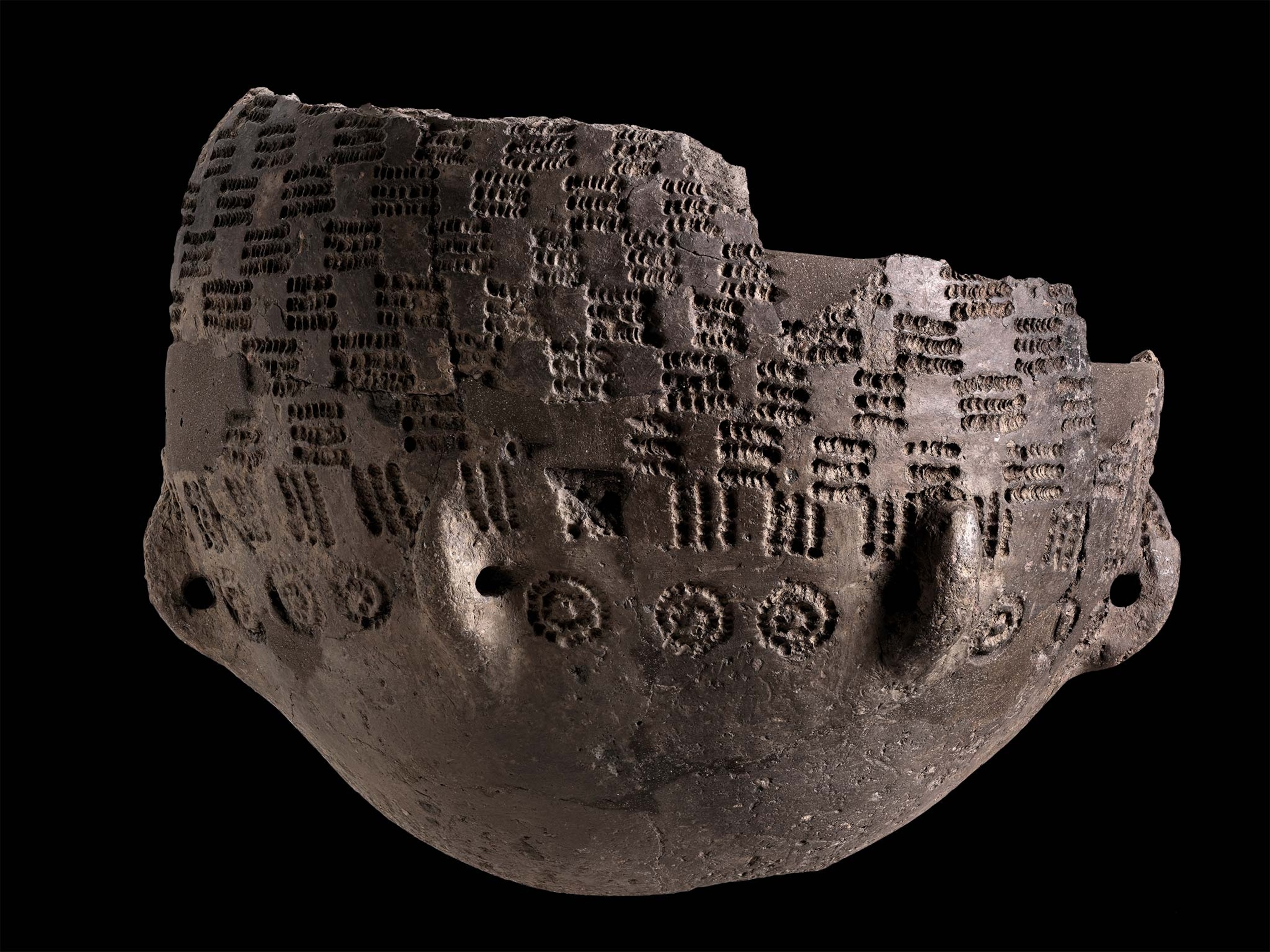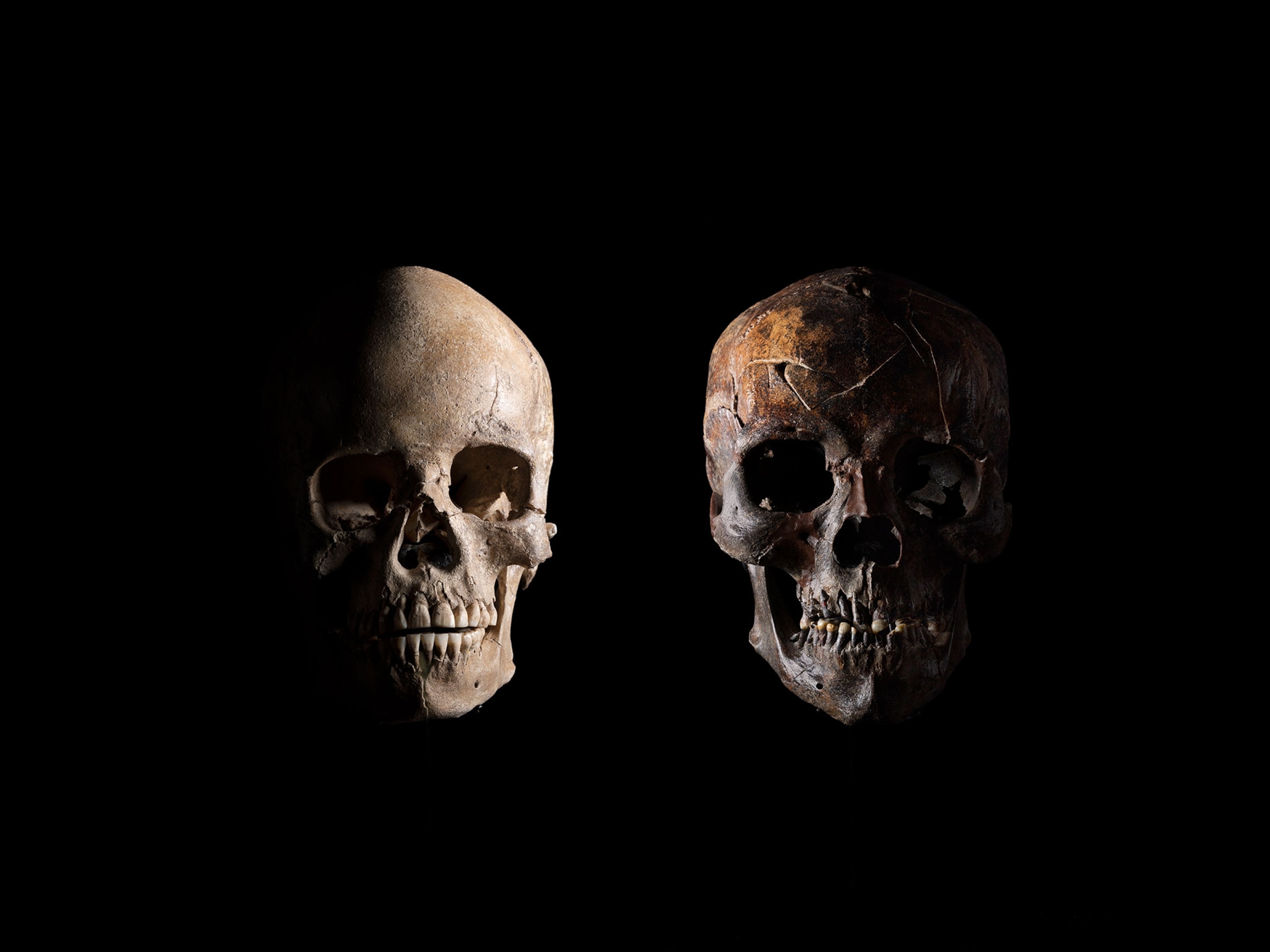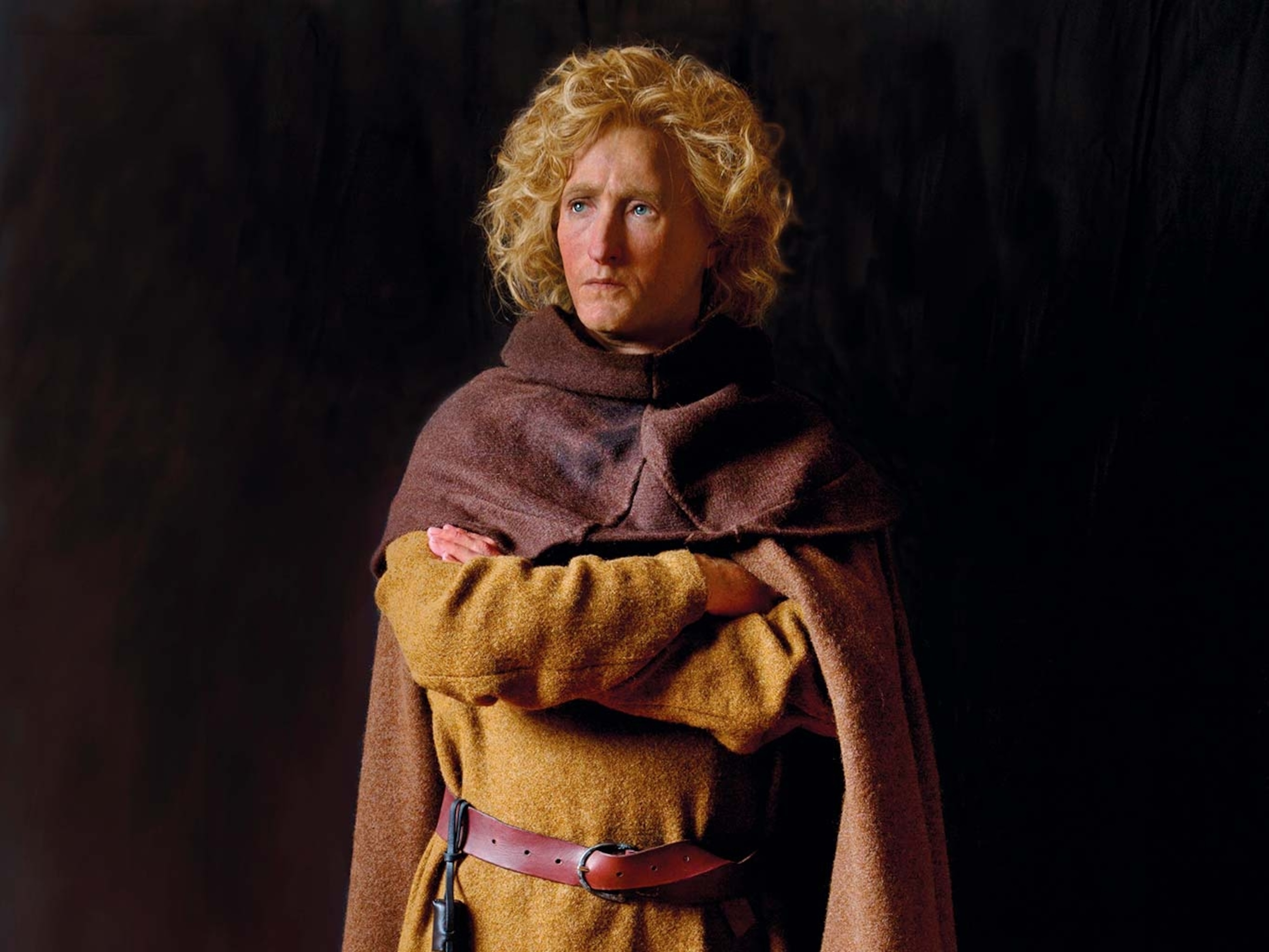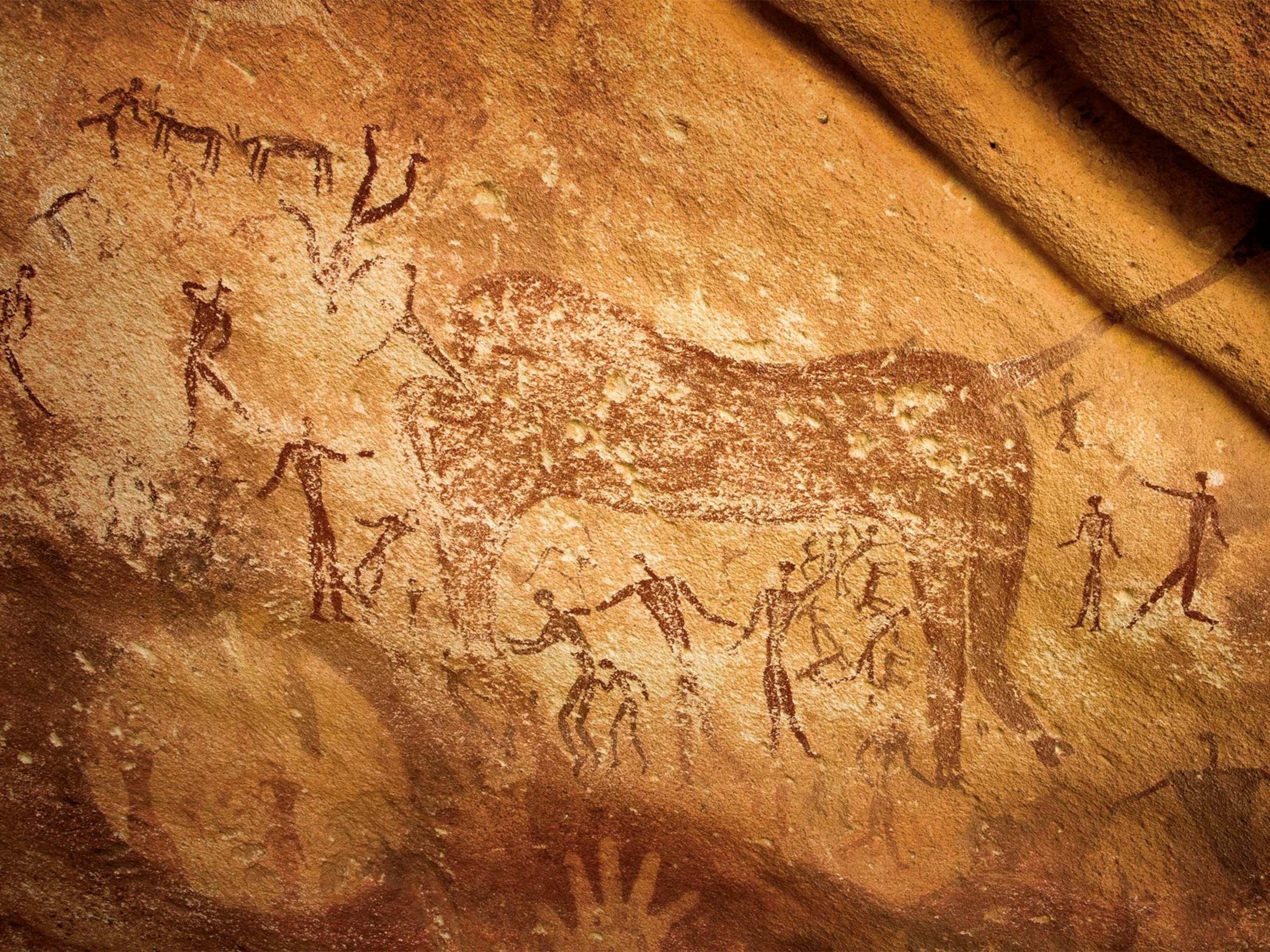
This skull was preserved in a bog for 5,000 years—with the murder weapon beside it
Researchers have uncovered new insights about life in the Stone Age thanks to Vittrup Man, the name given to the bones of a hunter-gatherer found in a Danish bog.
New insights about the life of a middle-age man who lived some 5,000 years ago have given a vivid snapshot of northern Europe at the dawn of agriculture.
In 1915 skeletal human remains, including a fragmented skull, were discovered by peat diggers in the northern Denmark village of Vittrup. A wooden club (believed to have killed him), cow bones, and a ceramic vessel were found in the bog along with him. Nick-named “Vittrup Man,” he was included in a 2014 study of Denmark’s genetic prehistory. Analysis showed that Vittrup Man’s DNA differed from that of the local Danish population, indicating that he grew up somewhere else.
Anders Fischer, a researcher at Sealand Archaeology, led the study. “We now have an individual behind the skeleton,” he told History. “One whose story tells of contact between two radically different worlds.”
(We thought we knew the secrets of Europe's bog bodies. We didn't.)
Farmers and hunters
During the Neolithic period when Vittrup Man was alive, Denmark was occupied by farmers known as the Neolithic Funnel Beaker culture. Farther north, in present-day Norway and Sweden, communities of Mesolithic hunter-gatherers lived. Using a combination of traditional archaeology and advanced biotechnology, Fischer’s research team discovered that Vittrup Man was closely related to those northern hunter-gatherers.
(These mummies were made … by accident?)
Historians have assembled evidence of exchanges of goods and people between both regions, and now Vittrup Man offers an intriguing individual perspective to this process. Dietary analysis showed he left his hunter-gatherer culture in the north as a teenager and lived among the farmers in Denmark for the rest of his life. His diet changed radically, going from mostly marine fish or mammals to cereals, milk, goats, and sheep.
Vittrup Man is now the earliest immigrant in Danish history and embodies the change between the two pre-historic periods and cultures. “His transition was not only geographical but also between two distinct ways of life,” Fischer said.
(He’s the most famous of Europe’s bog bodies. But who was Tollund Man?)
Seafaring in the Stone Age
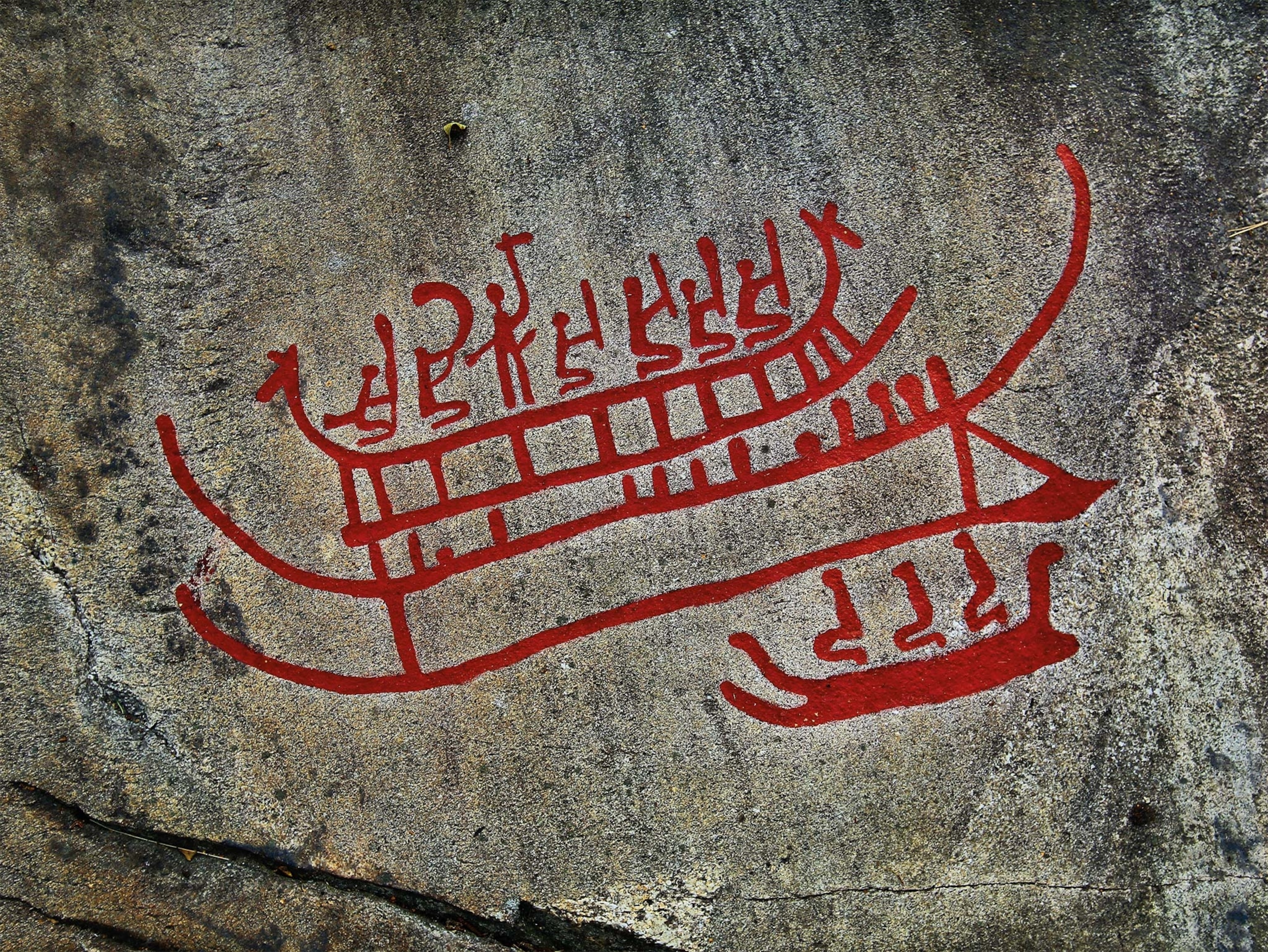
Sacrificed?
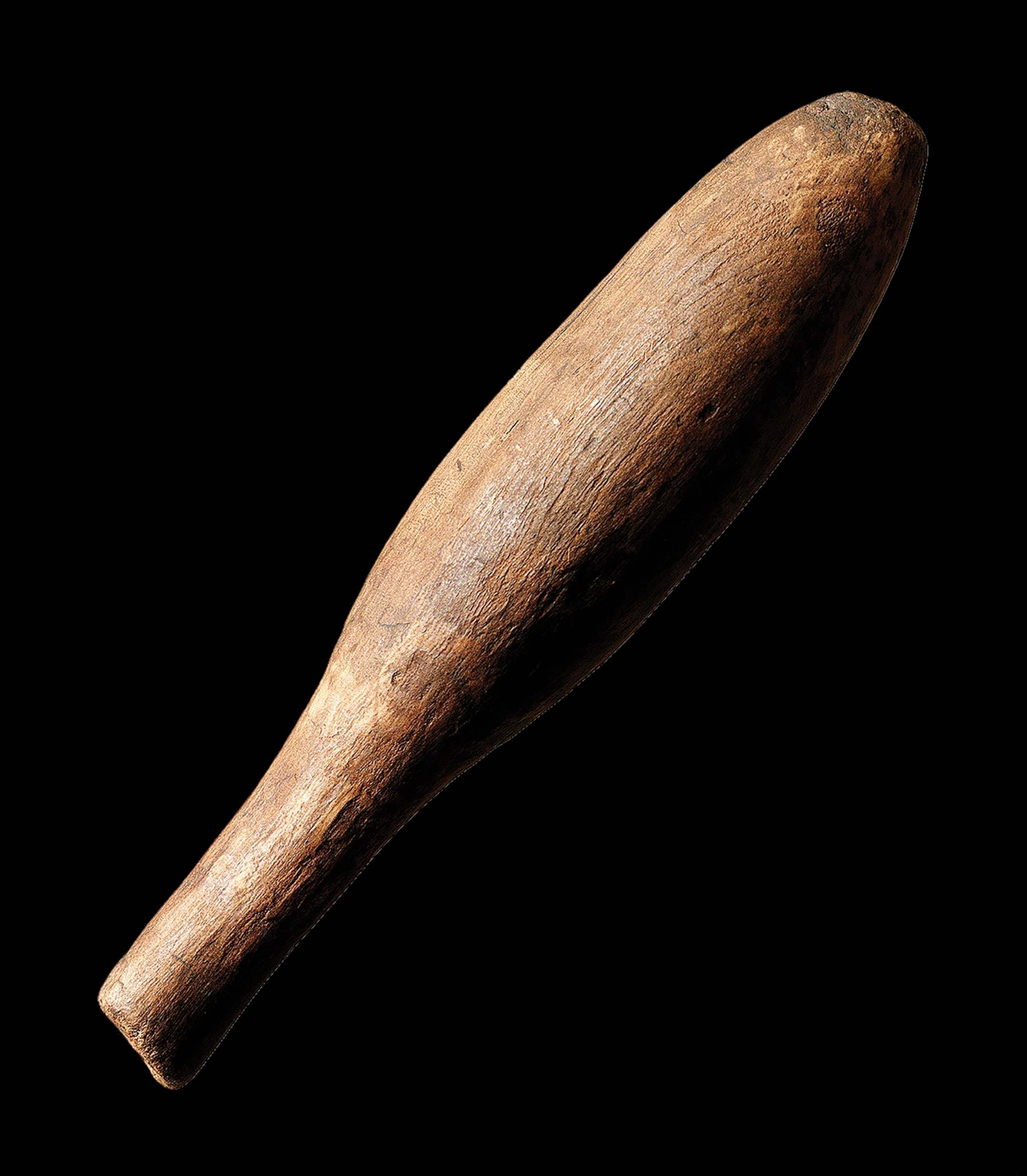
Tantalizing questions remain unanswered about Vittrup Man. Was his move from the world of hunters to the world of farmers made willingly, as a trader, or was he enslaved? Professor Kristian Kristiansen from the University of Gothenburg inclines to the latter theory: “Perhaps we should understand him as a slave who was sacrificed to the gods when he was no longer fit for hard physical labor.”
Whatever his status, analysis shows that sometime between 3100 and 3300 B.C. Vittrup Man died violently. He was struck eight times in the head with a wooden club. The multiple blows “may be because a few people were involved, each taking their turn,’’ Fischer said.
